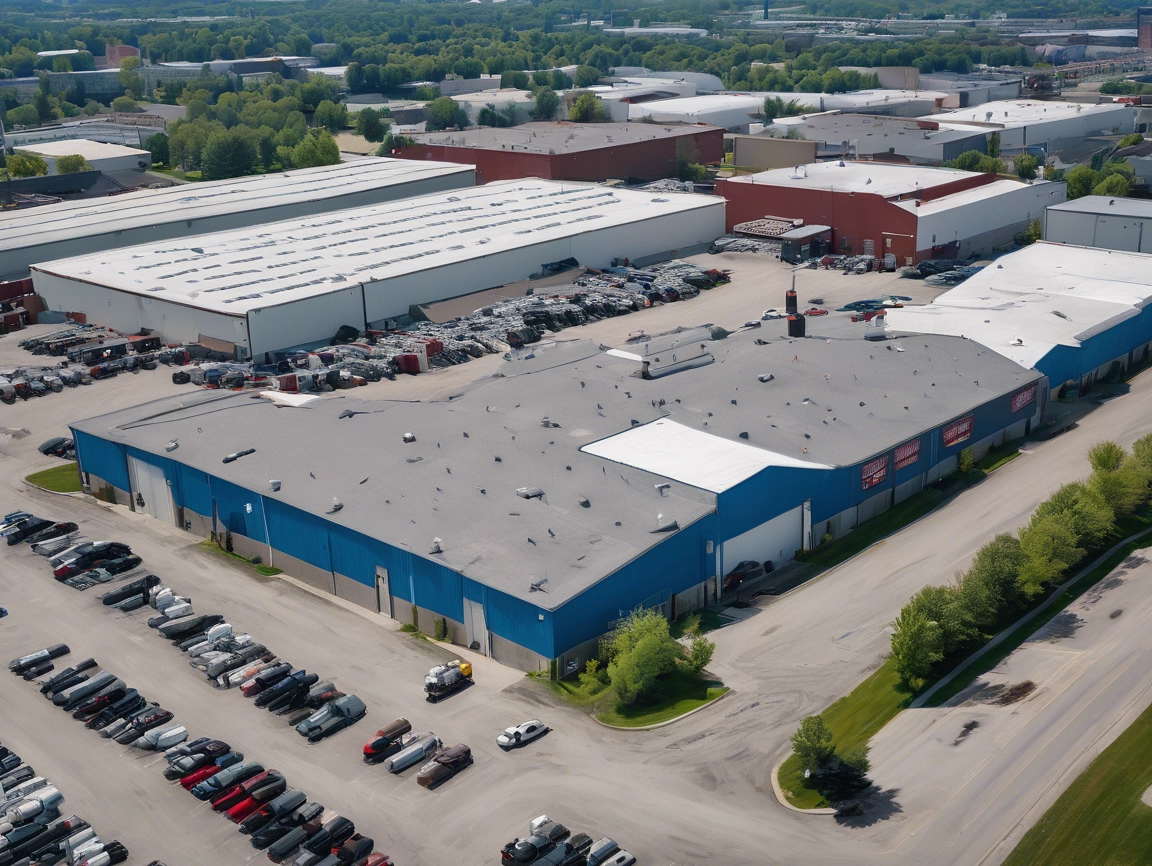Introduction: Why a Strong Leasing Strategy is Key to Profitability
Leasing out an industrial property in the GTA can be highly profitable, but securing the right tenant at the right price requires a well-executed strategy.
A well-leased industrial property ensures:
- Stable, long-term cash flow.
- Minimal vacancies and tenant turnover.
- Higher property value over time.
This guide will walk you through:
✔ How to price your industrial space competitively.
✔ Effective marketing strategies to attract the right tenants.
✔ How to screen tenants and negotiate lease agreements.
Step 1: Setting the Right Rental Price
One of the biggest mistakes landlords make is overpricing or underpricing their industrial property.
How to Determine the Best Rental Rate
✔ Research Market Rates – In Q4 2024, industrial rents in the GTA averaged $19.50 per sq. ft., with Brampton, Vaughan, and Mississauga seeing even higher rates. (Source)
✔ Analyze Vacancy Rates – A low vacancy rate (below 5%) means you can price your space higher.
✔ Consider Lease Type – Triple Net (NNN) leases allow landlords to pass property expenses to the tenant, reducing overhead costs.
📌 Example:
A 3,000 sq. ft. warehouse in Mississauga with a market rate of $20/sq. ft. could generate $60,000/year in base rent.
Step 2: Creating a High-Impact Marketing Strategy
Once your pricing is set, the next step is finding quality tenants quickly.
Best Marketing Channels for Industrial Properties
✔ Commercial Real Estate Platforms – List on LoopNet, CoStar, Realtor.ca, and Crexi for maximum visibility.
✔ Broker Partnerships – Work with industrial real estate agents who have direct access to business tenants.
✔ Direct Outreach to Businesses – Contact local logistics, manufacturing, and distribution companies in need of space.
✔ Professional Photography & Virtual Tours – Listings with high-quality images and videos receive 40% more inquiries.
📌 Example:
A landlord in Vaughan leased a 5,000 sq. ft. flex space in 2 weeks by using a broker and targeting e-commerce businesses needing local fulfillment centers.
Step 3: Screening Tenants to Minimize Risk
A bad tenant can cause financial losses through missed rent, property damage, or lease violations.
Key Factors to Assess When Screening Industrial Tenants
✔ Financial Strength – Review business credit reports, cash flow statements, and tax returns.
✔ Business Type & Stability – Choose established businesses with growth potential over startups with uncertain revenue.
✔ Tenant’s Use of Space – Ensure their operations align with zoning regulations and building capacity.
📌 Example:
A Mississauga landlord declined a tenant who couldn’t provide financials, avoiding a potential default situation.

Step 4: Negotiating a Strong Lease Agreement
Key Lease Terms to Include
✔ Lease Term Length – Industrial leases typically run for 5 to 10 years, ensuring stability.
✔ Triple Net (NNN) Lease Structure – Pass property expenses (taxes, insurance, and maintenance) to the tenant.
✔ Annual Rent Increases – Protect against inflation by building in a 2-5% annual rent escalation.
✔ Maintenance & Repairs – Define tenant vs. landlord responsibilities clearly to avoid disputes.
📌 Example:
A Vaughan property owner included a 5% annual rent increase in the lease, ensuring rental income kept pace with market growth.
Step 5: Managing the Property & Retaining Tenants
A well-managed property leads to longer tenant stays and higher lease renewals.
Best Practices for Property Management
✔ Regular Inspections – Conduct quarterly check-ins to identify issues early.
✔ Fast Maintenance Response – Ensure HVAC, plumbing, and electrical systems are in top condition.
✔ Lease Renewal Strategies – Offer early renewal incentives to retain tenants long-term.
📌 Example:
A landlord in Brampton offered a rent discount for early lease renewal, avoiding a costly vacancy period.
Final Thoughts: How to Lease Your Industrial Property Successfully
✔ Set competitive pricing based on market rates.
✔ Use multiple marketing strategies to find the right tenant.
✔ Screen tenants thoroughly to minimize risk.
✔ Negotiate lease terms that protect your investment.
✔ Manage the property well to ensure long-term occupancy.
A well-executed leasing strategy leads to stable income, reduced risk, and long-term profitability in the GTA’s industrial market.
FAQs
1. How long does it take to lease an industrial property in the GTA?
Most well-priced industrial properties lease within 30-90 days, depending on size, location, and market conditions.
2. What is the best lease structure for industrial properties?
A Triple Net (NNN) lease is preferred, as it shifts operating expenses (taxes, insurance, and maintenance) to the tenant.
3. How can I find high-quality industrial tenants?
✔ Use commercial real estate platforms like LoopNet & CoStar.
✔ Work with an experienced industrial broker.
✔ Directly market to local businesses in need of space.





